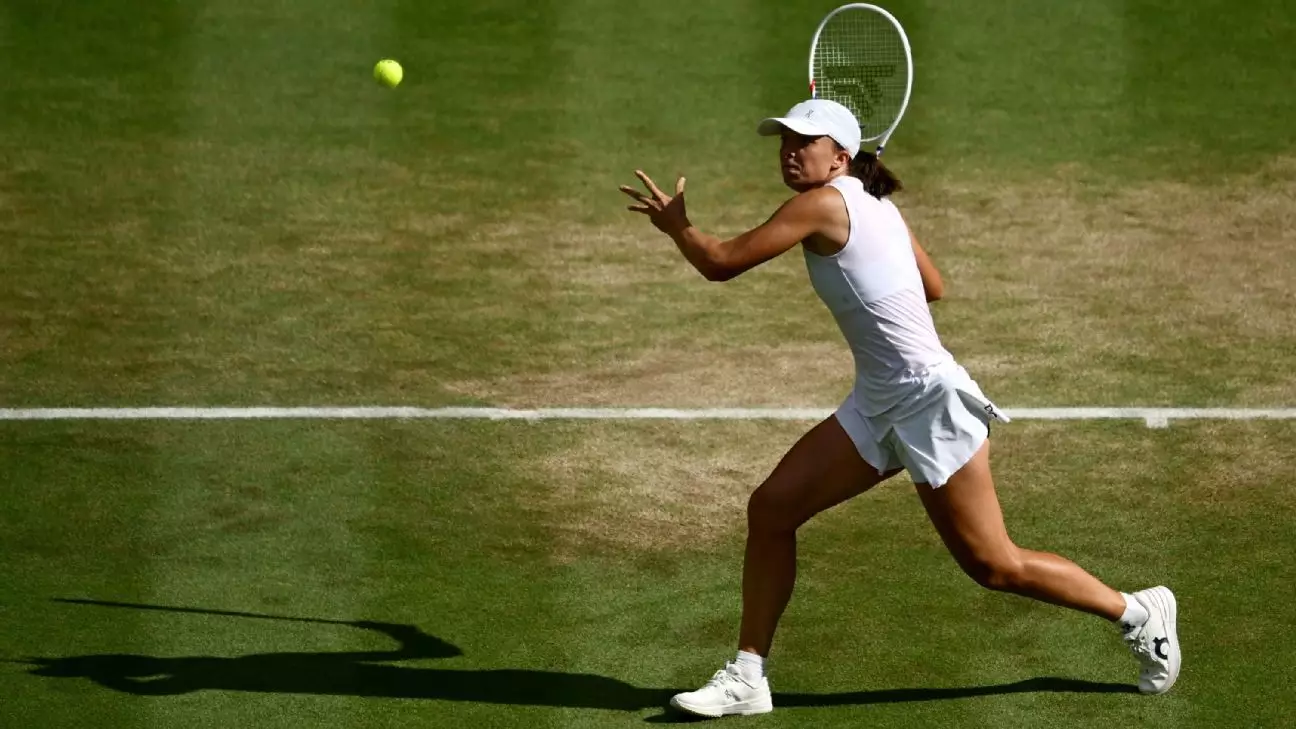In a display of sheer mastery, Iga Swiatek’s victory at Wimbledon was nothing short of historic, yet it also posed critical questions about the current state and future trajectory of women’s tennis. Her swift 57-minute victory, culminating in a rare double-bagel, was a testament to her relentless pursuit of excellence. However, beyond her individual achievement lies a broader conversation about the sport’s competitive depth, the significance of historically dominant performances, and the implications of such lopsided finals on the sport’s reputation.
While Swiatek’s performance might appear triumphant, it beckons skepticism about the overall competitiveness of women’s tennis at the highest levels. Rarely have finals been so one-sided, and this raises concerns about whether the current crop of players can sustain the level of challenge necessary for the sport’s growth. Her victory, though formidable, arguably highlights a potential disparity—either an emergence of a new dominant force or a troubling gap between her and the rest of the field. The occurrence of a 6-0, 6-0 final, only the third in tournament history, signals an uncomfortable reality: that tennis is perhaps becoming a battleground of unequal talent levels rather than a showcase of evenly matched rivalries.
Swiatek’s ascent has been applauded for her resilience and mastery across different surfaces—an achievement rare in modern tennis. However, her journey has not been unchallenged. She endured setbacks, including a doping ban stemming from inadvertent contamination, which some could interpret as a sign of the sport’s ongoing struggles with oversight and integrity. Her resurgence, marked by winning her first Wimbledon, underscores the importance of perseverance but also hints at the unpredictable fragility in the athlete’s career—a reminder that even the most exceptional performers are often tethered by external vulnerabilities.
The contrast between Swiatek’s commanding win and Amanda Anisimova’s first Grand Slam final appearance sheds light on the unpredictable and often fragile nature of athletic success. Anisimova, a young qualifier with promising skills, was overwhelmed on Centre Court, revealing the intimidating gap that still exists between emerging talents and established champions. Her story, however, is one of potential; breaking into the top 10 next week signifies that this daunting setback is merely a stepping stone, not the end of her journey. Such narratives reflect the broader dynamic of tennis—a sport where talent and resilience can ultimately bridge gaps, but only if the competitive environment fosters genuine parity.
The Future of Women’s Tennis: Shifting Power or Lingering Disparities?
The slant towards dominance by a few players like Swiatek signals a broader issue within women’s tennis: the question of how to cultivate a competitive landscape that is diverse and engaging. While the sport benefits from superstars with charismatic appeal, the danger lies in over-reliance on a handful of players whose wins can occasionally feel predictable. Historically, tennis has thrived through fierce rivalries and dramatic matches—elements that may be threatened if finals increasingly resemble exhibition matches for top-ranked players.
Furthermore, Swiatek’s rapid ascent and remarkable record suggest that the talent pool might be narrowing at the very top. Her dominance on grass after years of relative inexperience hints at a new era where versatility and resilience matter more than ever, but also raises doubts about the depth of competition. Will the future see her or her successors continue this trajectory, or are we witnessing the peak of a fleeting dominance that eventually erodes the sport’s unpredictability and appeal?
The sport’s governing bodies should consider whether current structures encourage a diverse and equitable field, rather than perpetuating a cycle where a select few dominate. Promoting a broader base of competitive players, offering equitable opportunities for development, and fostering mental health initiatives are vital for ensuring women’s tennis remains vibrant and compelling. Without intentional reforms, we risk a future where finals become predictable, and the thrill of an upset—what keeps fans invested—is lost.
In this context, the importance of mental health and athlete well-being cannot be overstated. Anisimova’s journey, battling through injury, mental health challenges, and a tentative return to top form, exemplifies the resilience needed to elevate the sport beyond sheer dominance. Her upcoming ascent into the top 10 indicates that raw talent alone isn’t enough; mental strength and systemic support are equally vital for nurturing a genuinely competitive environment.
Ultimately, the tale of Swiatek’s Wimbledon victory is both inspiring and cautionary. It underscores the potential for extraordinary talent to reshape the sport but also highlights the internal challenges that threaten to undermine its vibrancy. By critically examining these dynamics, stakeholders can work towards a future where tennis remains a showcase of human resilience, skill, and balanced competition—not just the triumph of a single player or shallow dominance.

Leave a Reply